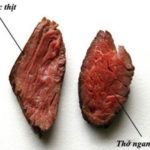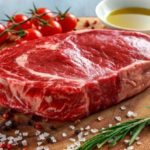Beef is a highly nutritious food that can be prepared in a variety of delicious ways, such as stir-frying, grilling, and stewing. Among these, stewing is an excellent choice for a hearty meal during cold winter days. Typically, to stew beef, one would marinate the meat and then cook it in a pressure cooker.
The cooking time depends on the power of the cooker, but usually, it takes around 25-30 minutes for the meat to become tender. However, what if you don’t have a pressure cooker? Stewing beef in a regular pot can take a long time, consuming both energy and your patience as it may take a few hours for the meat to soften. This is where a chef’s tip comes in handy: by adding a simple ingredient, you can achieve tender beef without the need for a pressure cooker.

According to the chef, the first step to a delicious stew is to choose fresh beef, preferably just butchered. One of the best cuts for stewing is the short rib, which is the connective tissue between the ribs. There are 13 ribs in total, corresponding to the position of pork ribs.
The meat from the first to the fifth rib is very lean and suitable for those on a diet or looking to build muscle. The “golden” section, however, is from the sixth to the eighth rib, which offers the most tender and flavorful meat. After stewing, this part of the meat has a firmer texture than the tenderloin. It is also the most suitable cut for stewing and produces the tastiest beef stew. On the other hand, the meat from the ninth to the thirteenth rib tends to be fattier and is preferred by those who enjoy richer dishes. Therefore, it is important to pay attention when choosing short ribs.
Once you’ve purchased your beef, wash it thoroughly and cut it into suitable square pieces for stewing. Remember to cut across the grain of the meat to ensure tenderness; cutting along the grain will result in tough and dry meat.

Boil an appropriate amount of water and add the beef cubes, cooking them for about 3 minutes. After the water boils, use a spoon to skim off any foam and then remove the beef.
It’s important to note that when stewing beef, you should always use boiling water instead of cold water. Adding cold water can cause the meat to become tough and dry. Additionally, it’s best to add enough boiling water at the beginning rather than adding more water midway through the cooking process.
The next step is crucial to ensuring tender beef: add a spoonful of white sugar to the pot while simmering over low heat. The sugar will help tenderize the meat by penetrating the fibers.
After simmering for some time, the beef should be almost ready. Just before serving, season with a pinch of salt to taste and cook for a little longer until it’s perfectly done.
According to “Phụ nữ Việt Nam”
Maximizing Durability and Energy Efficiency with High-Speed Kettles: Tips and Advice
Are you an electric kettle aficionado? If so, you’ll appreciate Ði?n máy Xanh’s latest offering. We’ve compiled comprehensive instructions to help you make the most of your electric kettle, including tips on how to prolong its life as well as maximize energy savings. Let’s get your kettle expertise up to date!
A Guide to Marinating Beef for Restaurant-Style Flavor and Texture
If you’re looking for a way to make your beef extra flavorful and succulent, try marinating it with salt or sugar! From juicy steaks to savory burgers, marinating your beef with salt or sugar can take your meals to the next level. Find out more here about how to enhance the taste and texture of your beef with a simple marinade.






































